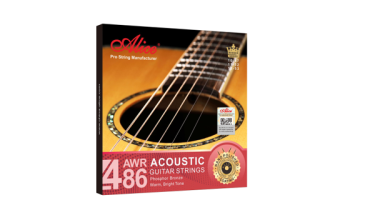Digital Marketing – digital technologies transformed marketing

To succeed in the future, organizations will need marketers, strategists, and agencies with up-to-date knowledge of how to apply digital media such as the web, email, mobile, and interactive TV. The aim of Digital Marketing: Strategy, Implementation, and Practice is to support students and professionals in gaining and developing this knowledge.
In the text, we will show how traditional marketing models and concepts can be applied to help develop digital marketing strategies and plans and where new models are appropriate. We will also give many practical examples and best practices for applying online communications tools to effectively market an organization’s products and services using the Internet and other digital media.
These are bought media where there is an investment to pay for visitors, reach or conversions through search, display ad networks, TikTok ads, or affiliate marketing. Offline, traditional media like print and TV advertising and direct mail remain important, accounting for the majority of paid media spending.
Paid, owned, and earned media
Developing a sound digital strategy today involves understanding a more complex, more competitive buying environment than ever before, with customer journeys involving many different forms of an online presence. To help develop a strategy to reach and influence potential customers online, it’s commonplace to refer to three main types of media channels marketers need to consider today
Paid media
These are bought media where there is an investment to pay for visitors, reach or conversions through search, display ad networks, or affiliate marketing. Offline, traditional media like print and TV advertising and direct mail remain important, accounting for the majority of paid media spending.
Owned media
This is media owned by the brand. Online this includes a company’s own websites, blogs, email list, mobile apps or their social presence on Facebook, LinkedIn, or Twitter. Offline-owned media may include brochures or retail stores. It’s useful to think of a company’s own presence as media in the sense that they are an alternative investment to other media and they offer opportunities to promote products using similar ad or editorial formats to other media. It emphasizes the need for all organizations to become multichannel publishers.
Earned media
Traditionally, earned media has been the name given to publicity generated through PR invested in targeting influencers to increase awareness about a brand. Now earned media also includes word-of-mouth that can be stimulated through viral and social media marketing, and conversations on social networks, blogs, and other communities.
It’s useful to think of earned media as the sharing of engaging content developed through different types of partners such as publishers, bloggers, and other influencers including customer advocates. Another way of thinking about earned media is as different forms of conversations between consumers and businesses occurring both online and offline.
The growing range of digital marketing platforms
If you think of the options to reach and interact with audiences when they are online, we have traditionally used digital media channels like search, social media, or display ads on media sites accessed via desktop or laptop-based hardware platforms.
The desktop access platform has been dominant for years and remains so for now, but the number of mobile smartphone and tablet visitor sessions now exceeds desktop Internet sessions for many consumer businesses.
Desktop, laptop, and notebook platforms
1 Desktop browser-based platform. This is traditional web access through the consumer’s browser of choice, whether Internet Explorer, Google Chrome, or Safari.
2 Desktop apps. We don’t hear this platform talked about much; increasingly users are accessing paid and free apps from their desktop via the Apple App Store or the Microsoft equivalent, like Gadgets. This gives opportunities for brands to engage via these platforms.
3 Email platforms. While email isn’t traditionally considered a platform, it does offer an opportunity separate from browser and app-based options to communicate with prospects or clients, whether through editorial or advertising, and email is still widely used for marketing.
4 Feed-based and API data exchange platforms. Many users still consume data through RSS feeds, and Twitter and Facebook status updates can be considered a form of feed or stream where ads can be inserted.
5 Video-marketing platforms. Streaming video is often delivered through the other platforms mentioned above, particularly through browsers and plug-ins, but it represents a separate platform.
Television channels delivered through streaming over the Internet (known as IPTV) are related to this platform.
Mobile phone and tablet platforms
The options on mobile hardware platforms are similar in many ways to the desktop. Since they can be used in different locations there are many new opportunities to engage consumers through mobile marketing and location-based marketing. The main platforms are:
1 Mobile operating system and browser. There are mobile browsers that are closely integrated with the operating system.
2 Mobile-based apps. Apps are proprietary to the mobile operating system, whether Apple iOS, Google Android, RIM, or Windows. A big decision is whether to deliver content and experience through a browser and/or a specific app that provides an improved experience. If you check the latest research you will see that the majority of mobile media time is app-based.
Feel free to read also: Device fingerprinting
Last Thought
This defines how the online experience of a brand is delivered through content, visual design, interactivity, sharing, rich media, and how the online presence integrates with the offline presence. All of the companies referenced have a clear, compelling OVP. Strategic decisions about the future OVP a company offers is a key part of Internet marketing strategy.





